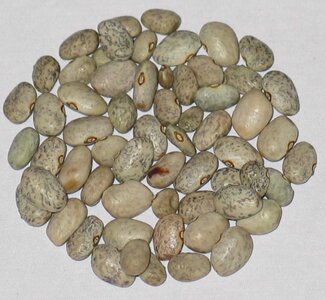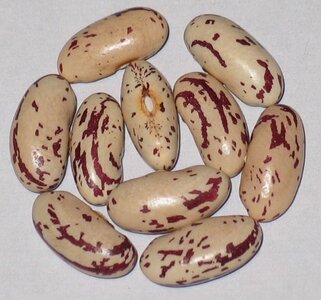- Thread starter
- #1,021
Blue-Jay
Garden Master
- Joined
- Jan 12, 2013
- Messages
- 3,429
- Reaction score
- 10,892
- Points
- 333
- Location
- Woodstock, Illinois Zone 5
Belgische Suppenbohne - Pole Dry. Left Photo. Interprets into English as Belgian Soup Bean. I acquired this one from my Austrian bean friend in Liebenfels in 2015. This years Network grower turned in beautiful seed. It was grown in De Soto, Wisconsin.
Blaugraue - Pole Dry. Suppossedly a blue colored bean. It seems this bean and other blue beans color is affected tempurature when the seeds are forming. This bean was sent to me by Cordula Metzger from Lebenz, Germany. Cordula runs the networking of beans at Bohnen-Atlas. This years grower was from Pella, Iowa.


Belgische Suppenbohne..........................................Blaugraue
Blaugraue - Pole Dry. Suppossedly a blue colored bean. It seems this bean and other blue beans color is affected tempurature when the seeds are forming. This bean was sent to me by Cordula Metzger from Lebenz, Germany. Cordula runs the networking of beans at Bohnen-Atlas. This years grower was from Pella, Iowa.


Belgische Suppenbohne..........................................Blaugraue


